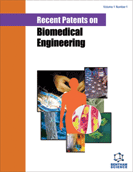Abstract
Cardiovascular disease is the leading cause of morbidity and mortality in the United States, accounting for more than one third of all deaths. In heart failure patients, progressive impairment in the ability of the heart to effectively pump blood to the body is caused by adverse remodeling, scar formation and loss of cardiomyocytes. In the past two decades, new bioengineering strategies to counteract the effects of heart failure on cardiac function have shown promise in experimental models. These include the innovative use of biological substrates and polymers to develop two- and threedimensional scaffolds and cardiomyocyte patches to replace or support damaged cardiac tissue. This patent review highlights developments in this arena in the past few years, focusing on the array of starting materials, both cellular and acellular, that are used in the creation of these patches and outlines the major challenges to the field that must be addressed to turn these approaches into viable therapies.
Keywords: Heart failure, tissue engineering, cardiomyocyte, stem cells
 5
5

